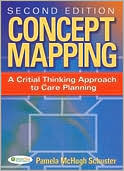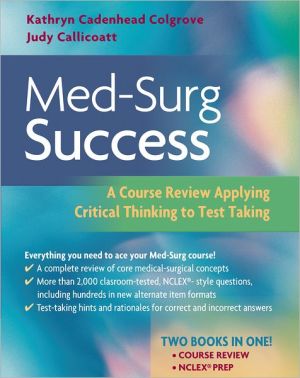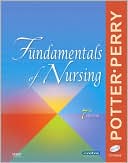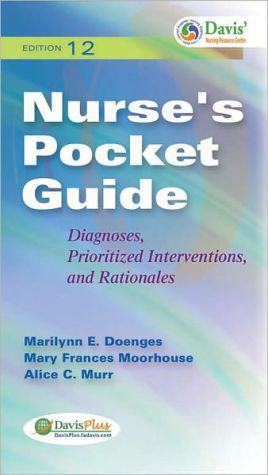Concept Mapping: A Critical-Thinking Approach to Care Planning
Search in google:
Provide your students with a clear, visual and systematic way of thinking about, identifying, and devising a plan of care. Davis Care Planning Nursing Diagnosis Resource CenterYour resource for nursing diagnosis, care planning and concept maps, concept map generator, care plan template, interactive and printable assessment tool, and more! Davis Care Planning Nursing Diagnosis Resource CenterYour resource for nursing diagnosis, care planning and concept maps, concept map generator, care plan template, interactive and printable assessment tool, and more!http://davisplus.fadavis.com/daviscareplans/index.cfm Doody Review Services Reviewer:Carole Ann Kenner, DNS, MSN, BSN(Northeastern University Bouve College of Health Sciences)Description:This unique book addresses care planning from the concept mapping perspective. It uses this process to help students develop holistic and comprehensive plans and employ critical thinking throughout the process.Purpose:The purpose is to help students synthesize pertinent assessment data by using a concept mapping technique. The concept map approach is useful from a faculty and student perspective to visualize the key points that the care plan needs to address. These worthy objectives are met. Audience:The primary audience is the undergraduate student.Features:The book's format follows the steps of the nursing process. It uses the concept mapping process to illustrate each step of care planning. The humorous way the author approaches the subject lends itself to a strong teaching/learning process. For example, the first chapter is "Twas the Night before Clinical" and the last chapter "When the Clinical Day is Over: Patient and Self Evaluation." This method of teaching addresses exactly how a clinical student approaches clinical preparation, the actual day, and post conference time. There is a clear and concise chapter on documentation. Each chapter has illustrations that are color coded to make key points stand out. The appendixes contain a quick reference for nursing diagnoses arranged according to Maslow's Hierarchy of Needs, nursing diagnoses arranged by Gordon's Functional Health Patterns, and finally the NANDA list.Assessment:This is one of the best nursing care plan books I have seen. It is much better than the average nursing planning book as it captures the reader's attention and uses a unique method of teaching concept mapping. This tool is also wonderful for faculty to use as they look at their curriculum and how the nursing process is covered in their courses. Competing books include Nursing Care Plans and Documentation: Nursing Diagnoses and Collaborative Problems, 3rd edition, by Carpenito (Lippincott Williams & Wilkins, 1999); Nursing Care Plans: Guidelines for Individualizing Patient Care, 6th Edition, by Doenges, et al. (F.A. Davis , 2002); and Nursing Care Plans: Nursing Diagnosis and Intervention, 4th Edition, by Gulanick et al. (Mosby, 1998).
1'Twas the Night Before Clinical12Gathering Clinical Data: The Framework for Concept Map Care Plans193Concept Mapping: Grouping Clinical Data In a Meaningful Manner454Nursing Interventions: So Many Problems, So Little Time715Nursing Implementation: Using Concept Map Care Plans In the Health-Care Agency896Mapping Psychosocial Problems1037Concept Maps as the Basis for Documentation1318When the Clinical Day is Over: Patient Evaluations and Self-Evaluations147App. ANursing Diagnoses Arranged by Maslow's Hierarchy of Needs159App. BNursing Diagnoses Arranged by Gordon's Functional Health Patterns161App. CNorth American Nursing Diagnosis Association's Nursing Diagnosis Categories163Index167








